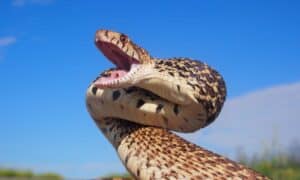Introduction
Snake bites are a serious medical emergency situation that can take place in various atmospheres, specifically in regions where serpents prevail. In Australia alone, there are many species of poisonous serpents such as the Tiger Snake, Eastern Brown Snake, and King Brown Snake. Recognizing how to successfully manage snake attacks is necessary for any individual that hangs around outdoors or lives in rural areas. This article will explore comprehensive first aid management strategies for snake bites and outline ideal practices for replying to these incidents.
First Help Monitoring of Serpent Bites: Ideal Practices for Every Situation
When handling a serpent bite, the initial feedback can dramatically influence the target's end result. Immediate action is crucial since speedy medical intervention often establishes the degree of injury or survival price. Here are vital first aid concepts to bear in mind:
Stay Calm: The primary step in managing a snake bite is to stay calm. Panic can raise heart prices and enhance the spread of poison throughout the body. Call for Help: Dial emergency services instantly. Offer them with your area and any information regarding the serpent if possible. Keep the Target Still: Motivate the target to remain as still as feasible. Movement can increase blood circulation, accelerating venom absorption into the bloodstream. Positioning: If feasible, place the affected limb at or below heart level. This positioning helps reduce poison spread. Remove Tight Clothing: Loosen up any kind of clothes or fashion jewelry around the bite site; swelling might happen swiftly after a snake bite. Do Not Apply Ice/Cold Packs: As opposed to common belief, using ice can intensify cells damage and ought to be avoided.Understanding Snake Variety and Their Habitats
Tiger Serpents and Their Habitat
Tiger snakes (Notechis scutatus) are among Australia's a lot of notorious poisonous snakes because of their hostile nature and potent venom.
- Habitat: They usually inhabit coastal areas, wetlands, and areas with dense plant life like marshes and swamps. Risks: Recognition of neighborhood tiger serpent habitats can minimize the danger of running into one unexpectedly.
Eastern Brown Snakes: A Substantial Threat
The Eastern Brown Snake (Pseudonaja textilis) is an additional extremely poisonous species located throughout eastern Australia.
- Habitat: This serpent grows in metropolitan locations, agricultural lands, and grasslands. Behavior: Recognized for its fast strikes when intimidated, understanding its behavior might assist minimize encounters.
Recognizing Signs and symptoms of Snake Bites
Identifying signs and symptoms early can You can find out more improve chances of efficient therapy:
Local Symptoms:- Pain and swelling around the bite site Discoloration or bruising
- Nausea or vomiting Difficulty breathing Signs of shock (e.g., pale skin, rapid heartbeat)
First Aid Protocols for Details Snake Bites
First Help for Tiger Snake Bite
In situation of a tiger snake bite:
Stay calm; keep still. Call emergency situation services immediately. Immobilize the impacted arm or leg utilizing a splint if available. Do not attempt to suck out poison or use ice.First Aid for Eastern Brown Snake Bite
For an eastern brown snake bite:
Keep calm; reassure the victim. Call emergency solutions without delay. Position them easily while preventing movement. Mark the sides of swelling with a pen ideally for observation.Creating Your Snake Bite First Aid Kit
A well-prepared emergency treatment kit can make snake bite symptoms all the distinction throughout emergencies:

|Thing|Function|| -------------------------------|---------------------------------------------------|| Compression bandages|To debilitate arm or legs|| Sterile gauze|To cover wounds|| Antihistamines|For allergic reactions|| Emergency contact numbers|Quick access throughout crises|| User's manual|Step-by-step support on dealing with emergency situations|
What Should You Never ever Do When Treating a Snake Bite?
Here's a list of common mistakes when treating snake bites:
Do not use tourniquets; they can create even more damage than good. Avoid reducing into or trying to draw out venom from the wound. Never offer alcohol or stimulants to victims as it can intensify their condition.FAQs Concerning First Aid Monitoring of Snake Bites
1. What should I do if I see a snake?
Stay calmness and pull back gradually without abrupt movements.

2. How do I determine if a serpent is venomous?
Research neighborhood types' qualities; lots of have distinctive color patterns or markings.
3. Can I utilize ice on a snake bite?
No, using ice can raise tissue damage.
4. How much time do I have after being attacked before looking for medical attention?
Seek clinical attention right away-- time is critical with venomous bites!
5. Is it secure to drive myself to the healthcare facility after a bite?
No! It's dangerous as symptoms may worsen en course; await professional help.

6. Are all serpents in Australia dangerous?
No! eastern small eyed snake bite While Australia has many harmful snakes, there are additionally non-venomous types that position no threat.
Conclusion
The emergency treatment administration of snake bites calls for timely action incorporated with understanding regarding local types' actions and habitats like those of tiger serpents and eastern brownish snakes in Australia. By following best methods detailed above-- such as remaining calm, calling emergency situation solutions without delay, and recognizing what not to do-- you significantly enhance survival chances after such crashes occur.
Equipping on your own with expertise concerning different kinds of serpents in your location and preparing a proper emergency treatment kit will ensure you prepare should an experience occur-- making you much better prepared to manage this possibly deadly situation effectively!